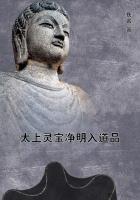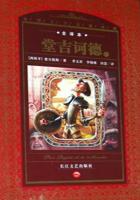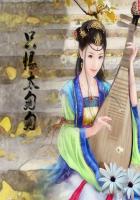Notre-Dame is neither pure Roman,like the first,nor pure Gothic,like the second;it is an edifice of the transition period.The Saxon architect had just finished erecting the first pillars of the nave when the pointed arch,brought back by the Crusaders,arrived and planted itself victorious on the broad Roman capitals which were intended only to support round arches.Master,henceforth,of the situation,the pointed arch determined the construction of the rest of the building.Inexperienced and timid at its commencement,it remains wide and low,restraining itself,as it were,not daring to soar up into the arrows and lancets of the marvellous cathedrals of the later period.It would almost seem that it was affected by the proximity of the heavy Roman pillars.
Not that these edifices showing the transition from Roman to Gothic are less worthy of study than the pure models.They express a gradation of the art which would else be lost.It is the grafting of the pointed arch on to the circular arch.
Notre-Dame de Paris,in particular,is a curious specimen of this variety.Every surface,every stone of this venerable pile,is a page of the history not only of the country,but of science and of art.Thus—to mention here only a few of the chief details—whereas the small Porte Rouge almost touches the limits of fifteenth century Gothic delicacy,the pillars of the nave,by their massiveness and great girth,reach back to the Carlovingian Abbey of Saint-Germain-des-Près.One would imagine that six centuries lay between that door and those pillars.Not even the Hermetics fail to find in the symbols of the grand doorway a satisfactory compendium of their science,of which the Church of Saint-Jacques-de-la-Boucherie was so complete a hieroglyph.Thus the Roman Abbey—the Church of the Mystics—Gothic art—Saxon art—the ponderous round pillar reminiscent of Gregory VII,the alchemistic symbolism by which Nicolas Flamel paved the way for Luther—papal unity—schism—Saint-Germain-des-Près—Saint-Jacques-de-la-Boucherie—all are blended,combined,amalgamated in Notre-Dame.This generative Mother-Church is,among the other ancient churches of Paris,a sort of Chimera:she has the head of one,the limbs of another,the body of a third—something of all.
These hybrid edifices are,we repeat,by no means the least interesting to the artist,the antiquary,and the historian.They let us realize to how great a degree architecture is a primitive matter,in that they demonstrate,as do the Cyclopean remains,the Pyramids of Egypt,the gigantic Hindu pagodas,that the greatest productions of architecture are not so much the work of individuals as of a community;are rather the offspring of a nation's labour than the outcome of individual genius;the deposit of a whole people;the heaped-up treasure of centuries;the residuum left by the successive evaporations of human society;in a word,a species of formations.Each wave of time leaves its coating of alluvium,each race deposits its layer on the monuments,each individual contributes his stone to it.Thus do the beavers work,thus the bees,thus man.Babel,that great symbol of architecture,is a bee-hive.
Great edifices,like the great mountains,are the work of ages.Often art undergoes a transformation while they are waiting pending completion—pendent opera interrupta—they then proceed imperturbably in conformity with the new order of things.The new art takes possession of the monument at the point at which it finds it,absorbs itself into it,develops it after its own idea,and completes it if it can.The matter is accomplished without disturbance,without effort,without reaction,in obedience to an undeviating,peaceful law of nature—a shoot is grafted on,the sap circulates,a fresh vegetation is in progress.Truly,there is matter for mighty volumes;often,indeed,for a universal history of mankind,in these successive layers of different periods of art,on different levels of the same edifice.The man,the artist,the individual,are lost sight of in these massive piles that have no record of authorship;they are an epitome,a totalization of human intelligence.Time is the architect—a nation is the builder.
Reviewing here only Christo-European architecture,that younger sister of the great Masonic movements of the East,it presents the aspect of a huge formation divided into three sharply defined superincumbent zones:the Roman,2 the Greek,and that of the Renaissance,which we would prefer to call the Greco-Romanesque.The Roman stratum,the oldest and the lowest of the three,is occupied by the circular arch,which reappears,supported by the Greek column,in the modern and upper stratum of the Renaissance.Between the two comes the pointed arch.The edifices which belong exclusively to one or other of these three strata are perfectly distinct,uniform,and complete in themselves.The Abbey of Jumiéges is one,the Cathedral of Reims another,the Sainte-Croix of Orleans is a third.But the three zones mingle and overlap one another at the edges,like the colours of the solar spectrum;hence these complex buildings,these edifices of the gradational,transitional period.One of them will be Roman as to its feet,Greek as to its body,and Greco-Romanesque as to its head.That happens when it has taken six hundred years in the building.But that variety is rare:the castle-keep of ètamples is a specimen.Edifices of two styles are more frequent.Such is Notre-Dame of Paris,a Gothic structure,rooted by its earliest pillars in that Roman zone in which the portal of Saint-Denis and the nave of Saint-Germain-des-Près are entirely sunk.Such again is the semi-Gothic Chapter Hall of Bocherville,in which the Roman layer reaches half-way up.Such is the Cathedral at Rouen,which would be wholly Gothic had not the point of its central spire reached up into the Renaissance.3















